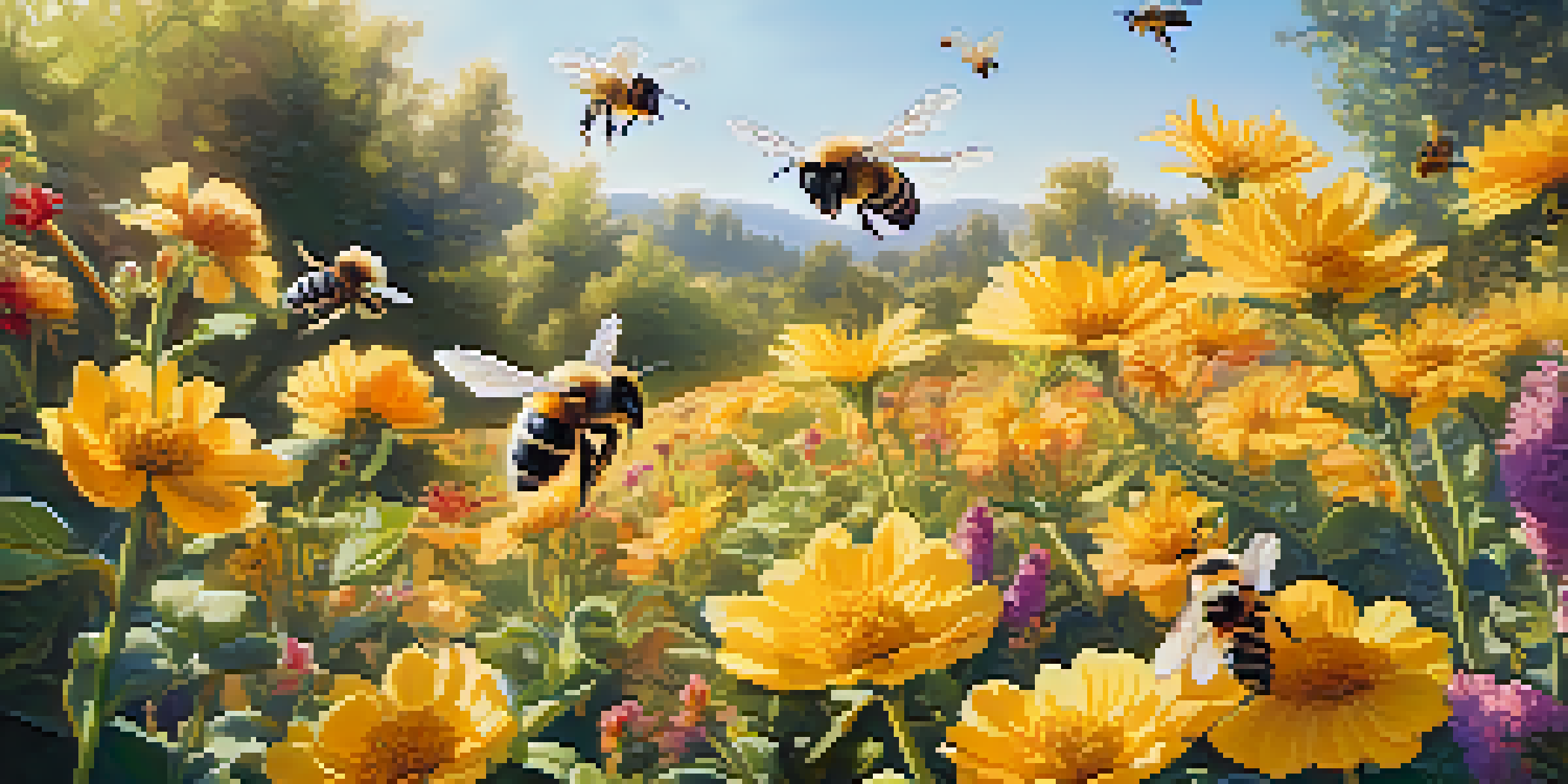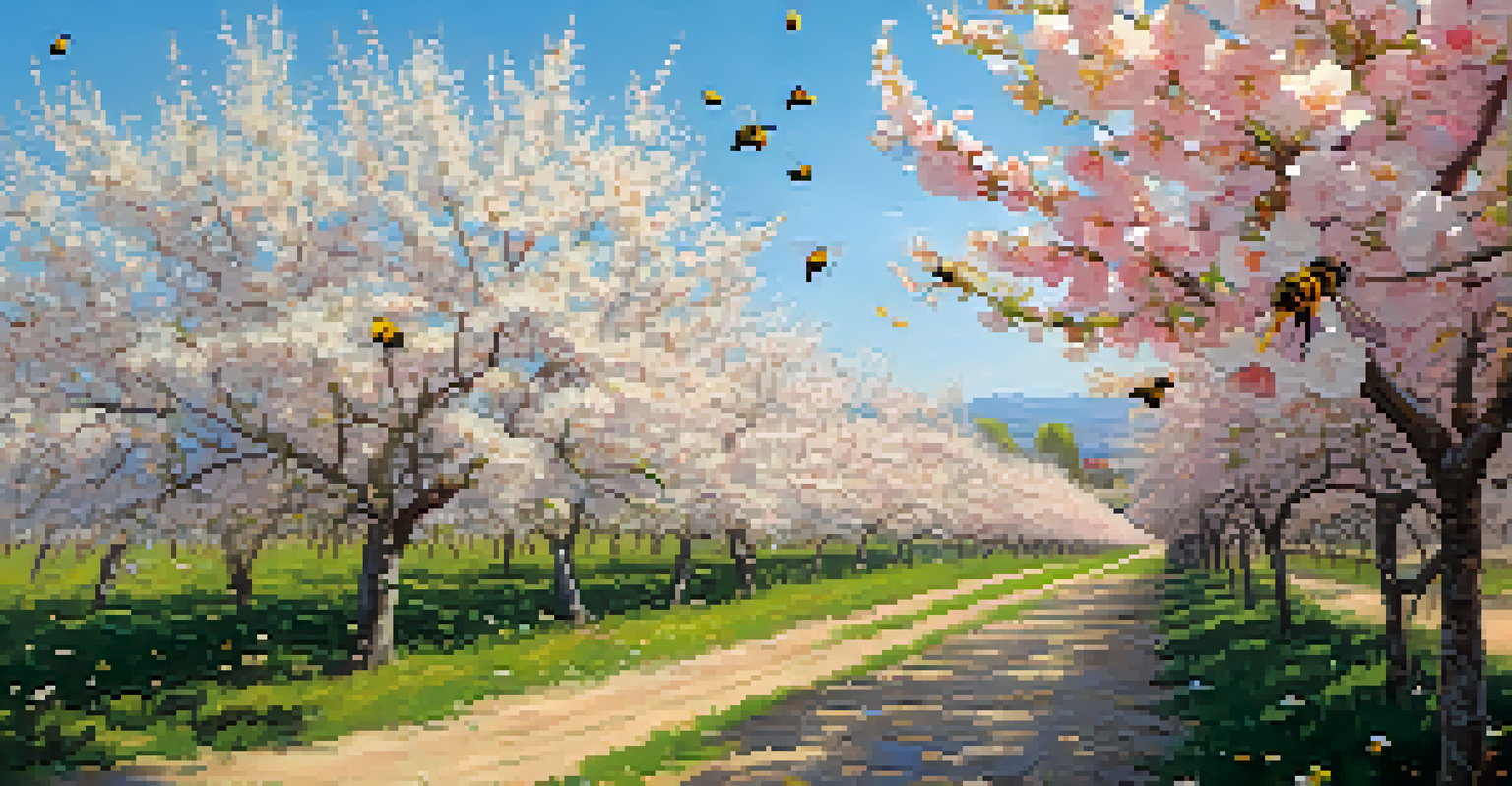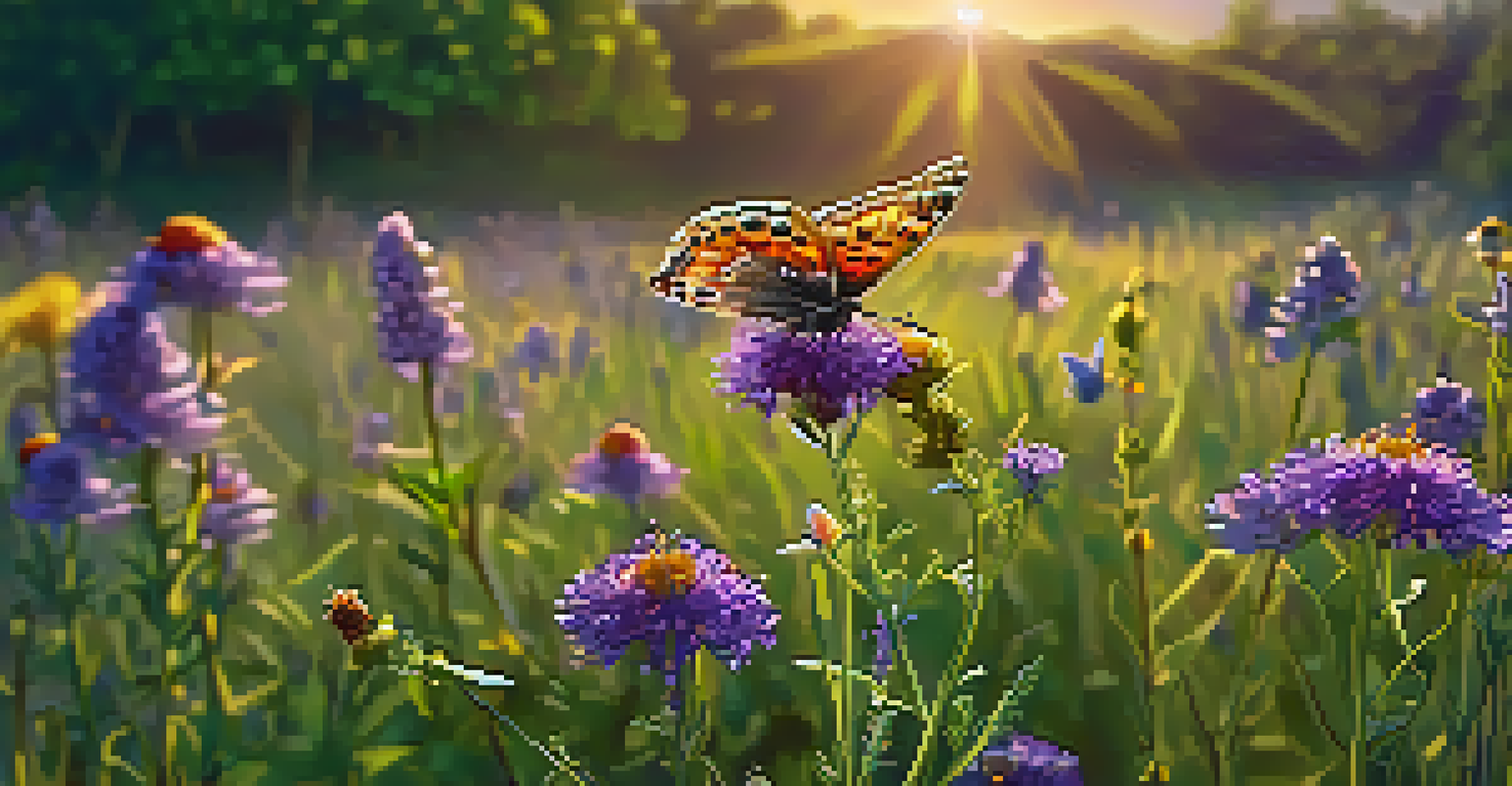Pollinator Decline: Threats to Plant Health and Biodiversity

What Are Pollinators and Why They Matter
Pollinators, such as bees, butterflies, and birds, are crucial for the reproduction of many plants. They facilitate the transfer of pollen, allowing flowers to produce fruits and seeds. This natural process not only sustains plant life but also supports entire ecosystems and food chains.
If we lose the bees, we will lose the food supply and many other plants that depend on them.
In fact, around 75% of the world's flowering plants depend on pollinators for reproduction. Without them, we would face a severe decline in plant diversity and abundance. This, in turn, would lead to a ripple effect, affecting animals that rely on these plants for food and shelter.
Moreover, pollinators play a vital role in agricultural productivity. Many crops, including fruits, vegetables, and nuts, require pollination to yield a harvest. Therefore, protecting pollinators is not just about preserving nature; it directly impacts our food supply and economy.
The Current State of Pollinator Populations
Unfortunately, pollinator populations are declining at alarming rates around the globe. Factors like habitat loss, pesticide use, climate change, and diseases are contributing to this crisis. For instance, urbanization often leads to the destruction of natural habitats, leaving pollinators with fewer places to thrive.

Research indicates that some bee species have experienced declines of up to 90% in certain areas. This is not just a local issue; it’s a global concern that poses risks to our biodiversity. As pollinators dwindle, the plants they support also face the threat of extinction.
Pollinators Are Essential for Plants
Pollinators like bees and butterflies are vital for the reproduction of around 75% of the world's flowering plants, directly impacting biodiversity and food supply.
This decline is not just limited to bees; butterflies and other insects are also affected. The loss of these creatures is a warning sign that our ecosystems are under stress and need immediate attention.
Key Threats to Pollinator Health
One of the primary threats to pollinators is pesticide use. Chemicals designed to kill pests can also harm beneficial insects. Neonicotinoids, for example, are widely used pesticides that have been linked to bee population declines, disrupting their foraging and navigation abilities.
The future of food depends on the health of pollinators.
Another significant threat is habitat destruction. As cities expand and agricultural land increases, natural habitats are cleared, leaving pollinators with fewer resources. This loss of habitat reduces food sources and nesting sites, making survival increasingly difficult.
Climate change adds another layer of complexity. Shifts in temperature and weather patterns can alter the blooming times of flowers, which may not align with the activity periods of pollinators. This mismatch can lead to food shortages and further decline in pollinator populations.
The Role of Climate Change in Pollinator Decline
Climate change is reshaping our planet in ways that are detrimental to pollinators. Rising temperatures can change the distribution of plant species, causing flowers to bloom earlier or later than usual. This unpredictability makes it challenging for pollinators to find food.
Additionally, extreme weather events, such as droughts or heavy rainfall, can destroy habitats and disrupt the delicate balance of ecosystems. Pollinators depend on stable environments for their survival, and climate change threatens that stability.
Pollinator Populations Are Declining
Global pollinator populations are experiencing alarming declines due to habitat loss, pesticide use, and climate change, threatening ecosystems and agricultural productivity.
In essence, as our climate continues to shift, the delicate relationships between plants and their pollinators are at risk. Protecting pollinators means addressing climate change and working towards more sustainable practices.
How Pollinator Decline Affects Plant Health
With declining pollinator populations, the health of plants is severely impacted. Many plants rely on these creatures for successful reproduction, and without them, we see a reduction in fruit and seed production. This can lead to fewer plants in the environment.
Moreover, the loss of diverse plant species can destabilize ecosystems. Plants are essential for soil health and provide habitat for countless other species. As pollinator numbers dwindle, the resulting decline in plant diversity could threaten entire ecosystems.
This not only affects wildlife but also human populations that depend on these plants for food, medicine, and materials. The health of our planet's flora is intricately linked to the well-being of pollinators.
The Importance of Biodiversity for Ecosystems
Biodiversity refers to the variety of life in a given habitat, and it's essential for ecosystem resilience. Healthy ecosystems can withstand shocks and stresses, such as disease outbreaks or climate change. Pollinators play a central role in maintaining this biodiversity.
When pollinator populations decline, the plants they help reproduce also decline, leading to a loss of habitat for many species. This can create a domino effect, resulting in decreased wildlife populations and degraded ecosystems.
Climate Change Threatens Pollinators
Climate change disrupts the timing of flower blooms, creating food shortages for pollinators and jeopardizing the delicate balance of plant-pollinator relationships.
Essentially, biodiversity is the backbone of a healthy planet. Protecting pollinators is a critical step towards maintaining the balance and health of our ecosystems.
What We Can Do to Protect Pollinators
Protecting pollinators requires collective action, and there are several practical steps we can take. Creating pollinator-friendly gardens by planting native flowers, reducing pesticide use, and providing habitats such as bee hotels can make a significant difference.
Moreover, supporting local farmers who practice sustainable agriculture can help protect pollinator habitats. Choosing organic products or those labeled as pollinator-friendly encourages more environmentally conscious farming practices.

Lastly, raising awareness about the importance of pollinators is crucial. When we educate ourselves and others, we can advocate for policies that protect these vital creatures and their habitats.